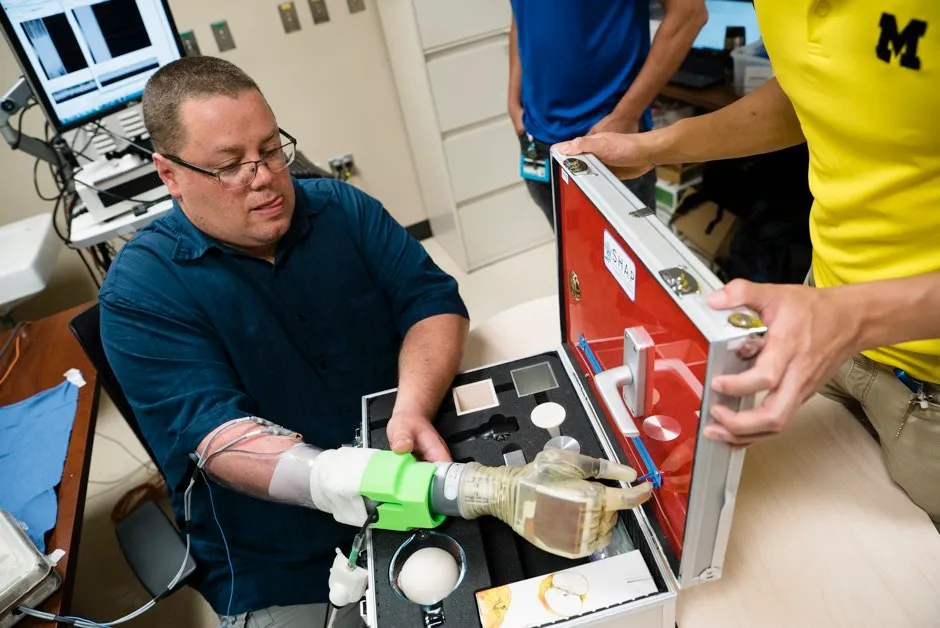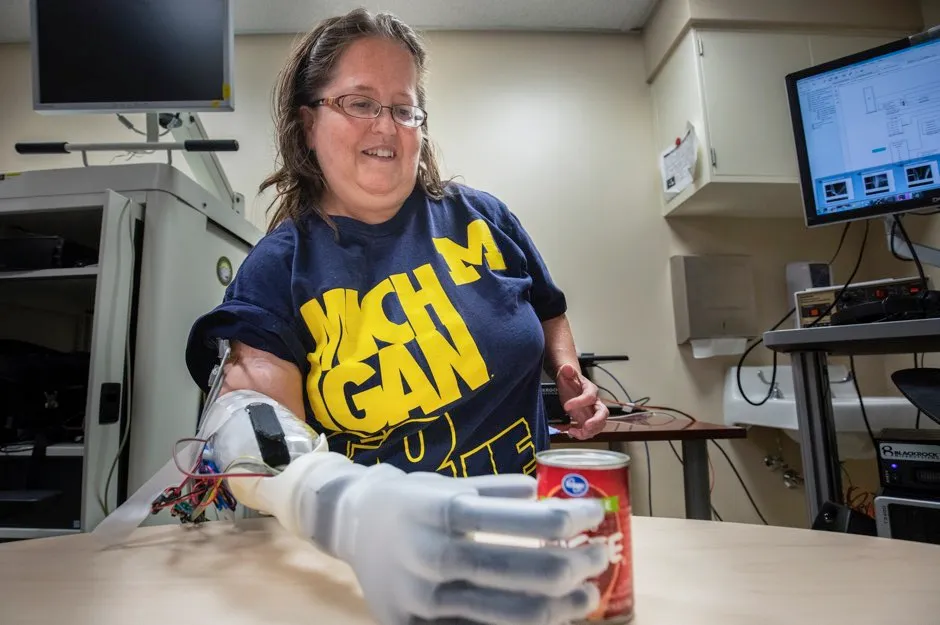- New technology amplifies nerve signals to the point they are able to be read by a prosthetic arm and translated into movements.
- The device allows amputees to have precise control of their prosthetic hand.
- Works for nearly a year without the need for adjustments.
A new piece of technology that allows amputees to move individual fingers in their prosthetic limbs by using their mind has been developed by scientists.
The so-called “nerve interface” technology uses muscle grafts, electrodes and machine learning algorithms to amplify the faint nerve signals coming from the amputee’s residual limb so the bionic hand can receive these signals in real-time.
The US researchers said their technology, which can last for almost a year without adjustments, allows amputees to have precision control of their prosthetic hands.

Dr Robert Oneal, a collegiate professor of plastic surgery at the University of Michigan’s Medical School in the US and study co-author said: “This is the biggest advance in motor control for people with amputations in many years.
“We have developed a technique to provide individual finger control of prosthetic devices using the nerves in a patient’s residual limb.
“With it, we have been able to provide some of the most advanced prosthetic control that the world has seen.”
Read more about prosthetics:
- The engineer who fixed his own heart
- Robotic hybrid heart beats like a real organ
- Welcome to the Cyborg Fair
- Print your own body parts
Four participants were involved in the study published in the journal Science Translational Medicine.
All the test subjects used the Mobius Bionics LUKE arm developed by a medical device company based in the US.
As the peripheral nerve signals in an amputated limb are too faint to be picked up by the electrodes, the researchers found a way to amplify these signals wrapping the nerves in tiny muscle grafts.
These muscle grafts then regenerated and developed nerves and blood vessels over three months, which prevented the growth of nerve masses that lead to phantom limb pain.

Electrodes implanted in the muscle grafts were able to record the peripheral nerve signals and pass them on to a prosthetic hand in real-time.
Dr Oneal said: “We designed a way to connect up the peripheral nerves with a piece of muscle.
“When a tiny peripheral signal comes down the nerve it goes down to the muscle and becomes a huge muscle signal.”
In the lab, the participants were able to pick up blocks with a pincer grasp and move their thumb in a continuous motion using their thought.
In addition, they were able to lift round objects and even play a version of the rock, paper, scissors game.
Dr Cindy Chestek, an associate professor of biomedical engineering at the University of Michigan’s College of Engineering, and one of the study authors said: “So now we can access the signals associated with individual thumb movement, multidegree of freedom thumb movement, individual fingers.
“This opens up a whole new world for people who are upper limb prosthesis users.”
The researchers said their nerve interface worked for up to 300 days without requiring readjustments.
Study participant Joe Hamilton, who lost his arm in a fireworks accident in 2013, said: “It’s like you have a hand again.
“You can pretty much do anything you can do with a real hand with that hand. It brings you back to a sense of normalcy.”
The researchers are now looking for new participants as part of an ongoing clinical trial.
Reader Q&A: Is it really possible to control a robot with your mind?
Asked by: Ryan Cooke, St Albans
Yes it is. The USA’s Defense Advanced Research Projects Agency (DARPA) has a brain-controlled prosthetic arm for upper limb amputees. As the user thinks about various movements, the arm picks up the responding brain signals that appear in the remaining nerves at the site of the amputation. With incredible dexterity, the user can remove a letter from an envelope and even move eggs from one box to another.
But away from government-funded research projects, hobbyist and engineer William (Chip) Audette in Vermont controls a small toy robot using his brainwaves. He’s using open hardware called OpenBCI where electrodes on his head pick up brainwaves. The level of control is crude but is proof that advances in EEG technology, machine learning and robotics really are ushering in an age where we can control devices through the power of thought.
Read more:

